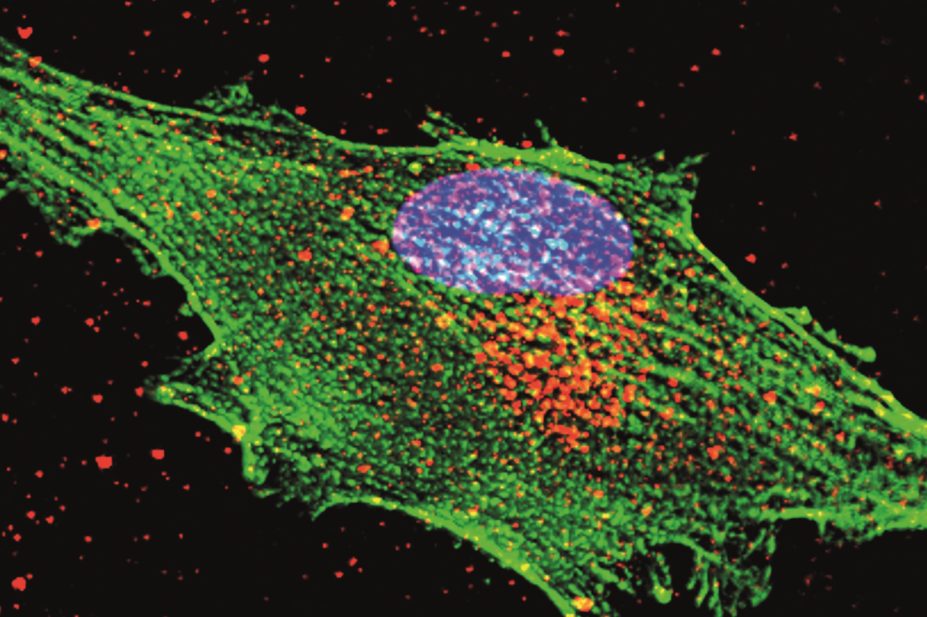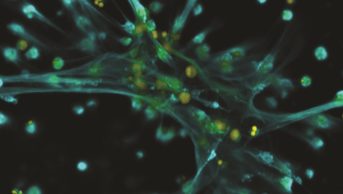
R. Bick, B. Poindexter, UT Medical School / Science Photo Library
Current treatments for Parkinson’s disease (PD) primarily address symptoms and do not slow down the progression of the disease, which involves the death of dopamine-producing neurons in the brain. A promising treatment target is the nuclear orphan receptor Nurr1 because it plays a role in both the development and protection of dopaminergic neurons.
By using high-throughput screening of more than 1,500 licensed drugs and natural compounds, researchers have now identified three drugs — the antimalarials amodiaquine and chloroquine, and the non-steroidal anti-inflammatory glafenine — that activate Nurr1.
When administered to a rat model of PD, amodiaquine and chloroquine led to a significant improvement in behavioural deficits, without dyskinesia-like side effects. “Our study shows that Nurr1 could serve as a valid drug target for neuroprotective therapeutics of PD,” the researchers write in PNAS (online, 29 June 2015)[1]
.
References
[1] Kim C-H, Han B-S, Moon J et al. Nuclear receptor Nurr1 agonists enhance its dual functions and improve behavioral deficits in an animal model of Parkinson’s disease. PNAS 2015;112(28):8756-8761. doi:10.1073/pnas.1509742112.
You may also be interested in

Breast cancer drug tamoxifen shows antimicrobial activity

Medicines shortages and slow approvals put ‘significant burden’ on pharmacists, says report
